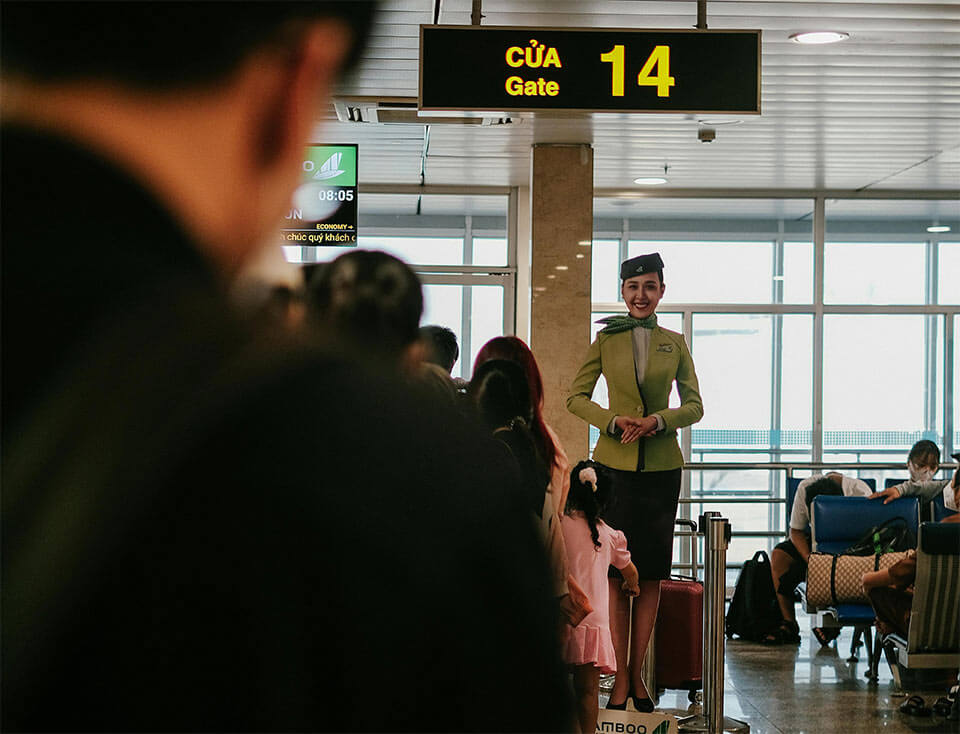A Traveler’s Guide to Vietnam’s Major Airports
Vietnam’s growing network of airports makes it easier than ever for travelers to explore the country. From bustling international hubs to regional gateways, knowing which airport to fly into can enhance your travel experience. Whether you’re heading to the vibrant streets of Ho Chi Minh City or the ancient charm of Hanoi, this guide to Vietnam’s airports will help you navigate your options.
1. Noi Bai International Airport (Hanoi)
Noi Bai International Airport (HAN), located in the capital city of Hanoi, is one of the main international airports in Vietnam. It is the second-largest airport in the country and serves as a gateway to the northern region. Noi Bai handles both domestic and international flights, making it a crucial hub for those traveling to or from northern Vietnam.
- Airport Code: HAN
- Distance from City Center: About 30 kilometers
- Facilities: Duty-free shops, restaurants, currency exchange, lounges
- Why Fly Here?: Noi Bai is the best airport to fly into for exploring northern Vietnam, including Hanoi, Halong Bay, and Sapa.
2. Tan Son Nhat International Airport (Ho Chi Minh City)
Tan Son Nhat International Airport (SGN) is the largest and busiest airport in Vietnam, located in Ho Chi Minh City (formerly Saigon). This airport serves as a major international and domestic hub for southern Vietnam. It’s an excellent choice for travelers heading to destinations like the Mekong Delta, Phu Quoc Island, or Ho Chi Minh City itself.
- Airport Code: SGN
- Distance from City Center: About 8 kilometers
- Facilities: Extensive shopping, restaurants, lounges, business centers
- Why Fly Here?: It’s the main airport for accessing southern Vietnam and Ho Chi Minh City, a top destination for business and tourism.
3. Da Nang International Airport (Central Vietnam)
Da Nang International Airport (DAD) is the primary airport in central Vietnam, serving the coastal city of Da Nang and nearby destinations such as Hoi An and Hue. It’s one of the busiest airports in Vietnam due to its strategic location and the region’s growing popularity among tourists.
- Airport Code: DAD
- Distance from City Center: About 3 kilometers
- Facilities: Duty-free shopping, cafes, car rentals, and tour services
- Why Fly Here?: Ideal for travelers looking to explore central Vietnam’s UNESCO World Heritage sites and beautiful beaches.
Vietnam’s Other Key Airports
4. Phu Quoc International Airport
Phu Quoc International Airport (PQC) is the main gateway to Vietnam’s popular island destination, Phu Quoc. This airport connects travelers to both domestic and international flights, making it a key entry point for holidaymakers seeking beach vacations.
- Airport Code: PQC
- Why Fly Here?: It’s the perfect airport for those looking for a relaxing escape to one of Vietnam’s top beach destinations.
5. Cam Ranh International Airport
Located near Nha Trang, Cam Ranh International Airport (CXR) is the main airport for travelers visiting this beach resort city. Cam Ranh handles both domestic and international flights, offering easy access to Nha Trang’s luxury resorts and coastal attractions.
- Airport Code: CXR
- Why Fly Here?: It’s the best option for those visiting Nha Trang and its surrounding coastal areas.
How Many International Airports Are There in Vietnam?
Vietnam currently has several major international airports, including Noi Bai (HAN) in Hanoi, Tan Son Nhat (SGN) in Ho Chi Minh City, Da Nang (DAD), Phu Quoc (PQC), and Cam Ranh (CXR). These airports connect Vietnam to the rest of the world, making it convenient for international travelers.
What Is the Best Airport to Fly Into Vietnam?
The best airport depends on your travel plans:
- Hanoi (HAN) is ideal for exploring northern Vietnam.
- Ho Chi Minh City (SGN) is the gateway to southern Vietnam.
- Da Nang (DAD) serves central Vietnam and nearby attractions like Hoi An.
- Phu Quoc (PQC) is perfect for a beach holiday.
Tips for Navigating Vietnamese Airports
- Arrive Early: Vietnam’s major airports, especially Tan Son Nhat and Noi Bai, can get quite busy, so plan to arrive at least 2 hours before domestic flights and 3 hours before international flights.
- Transportation: Many airports offer convenient taxi and shuttle services to nearby cities, but ridesharing apps like Grab are also widely available.
- Currency: While ATMs and currency exchange services are available at all major airports, it’s always a good idea to have some local currency (Vietnamese dong) on hand before arriving.
Conclusion
Navigating Vietnam’s airports is relatively straightforward, but understanding which airport to fly into can enhance your overall experience. From the bustling Tan Son Nhat in Ho Chi Minh City to the more relaxed Da Nang International Airport, each gateway offers unique access to Vietnam’s vibrant cities and stunning landscapes. Whether you’re flying internationally or hopping between cities, Vietnam’s airports are well-equipped to handle your needs.
















